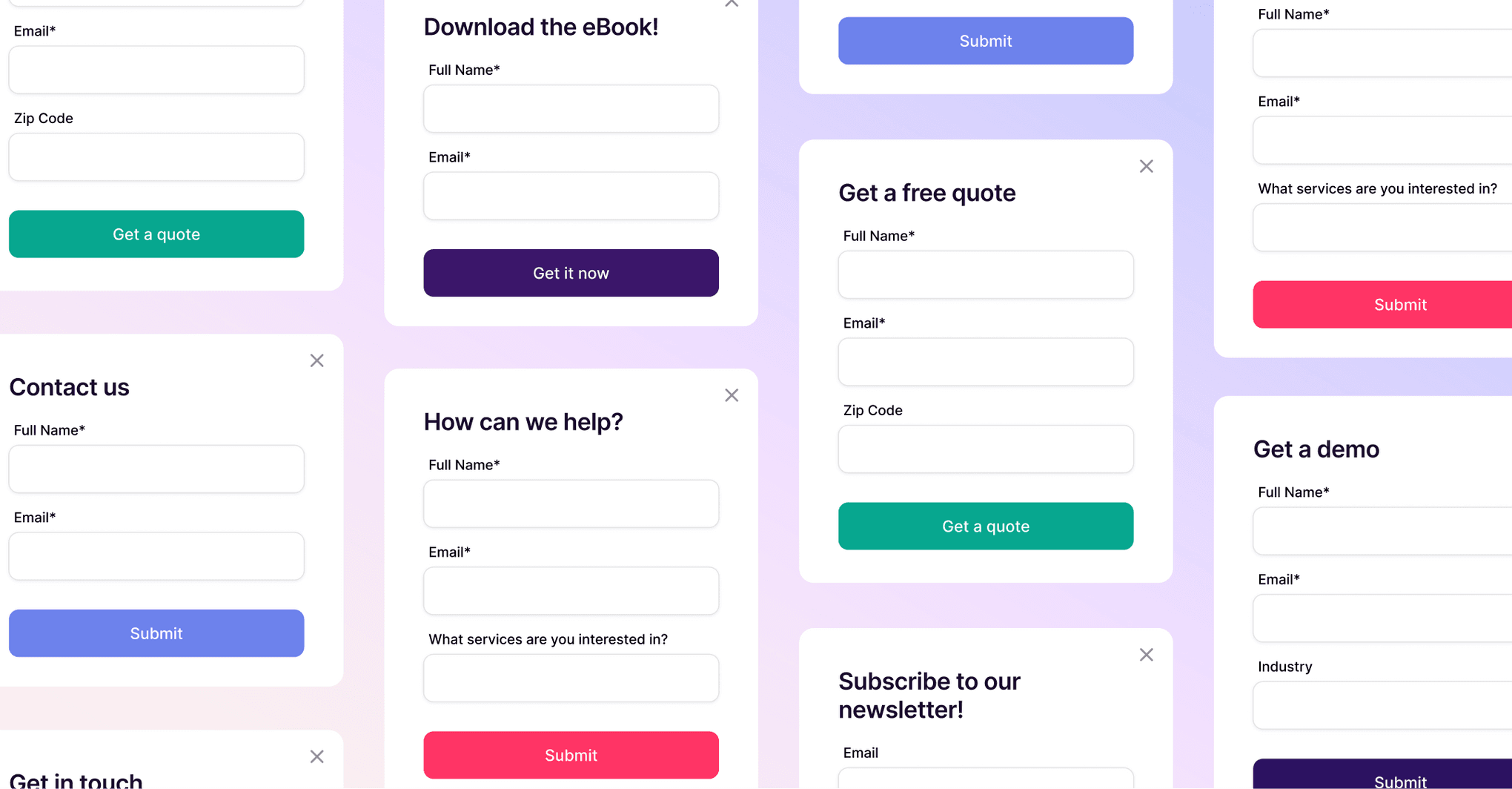Jemicah Marasigan
Content Marketing Manager
Why sales and operations alignment is the key to your agency’s growth
Agency life has a familiar rhythm: sales drives new opportunities, operations makes sure delivery stays on track, and clients expect everything to flow seamlessly.
When those pieces work together, agencies don’t just run smoother — they grow faster. But, when they don’t? That’s when the cracks start to show.
In a recent webinar, Copper’s VP of Marketing, Jessica Andrews, joined Parallax’s VP of Customer Success, Grant Hultgren, to unpack why the sales-ops collaboration matters so much, where it usually falls apart, and what strong alignment actually looks like in practice.
Why alignment between sales and ops teams matters
Momentum is everything when a prospect reaches out. Clients usually have an immediate need, so quick responses build trust. But moving too fast without structure introduces risk: unclear scopes, delayed delivery, and frustrated teams.
That’s where ops comes in. They bring the processes, clarity, and forecasting that transform promises into successful outcomes. Without their early involvement, even the best sales handoff can stumble.
Hultgren explained it best: “Every deal, we hear this all the time, it’s a snowflake and there’s truth to that. But the process, the operations behind that does not have to be a snowflake.”
The takeaway? Agencies need both speed and structure. The real win is creating systems that support momentum while ensuring projects are actually deliverable and profitable.
The tension agencies feel — and why it’s normal
Agencies aren’t alone in struggling with collaboration between these two functions. It’s one of the most common pain points across most industries. Why? Because they’re wired differently.
Sales is opportunity-focused: Follow up quickly, strike while the iron is hot, keep momentum alive.
Ops is structure-focused: Confirm details, scope realistically, resource appropriately.
The tension comes from both roles doing exactly what they’re designed to do. The trick isn’t asking one side to change — it’s creating systems where both can thrive. That’s where technology, automation, and integrated processes make the difference.
Where things start to break down
Even when agencies have the best intentions, collaboration can still get messy. The most common issues tend to look the same across the board:
Fragmented tools. Sales might be using spreadsheets or a basic CRM, while ops lives inside project management software. The handoff between the two becomes a manual document or email that inevitably misses key details.
Information silos. Sales and leadership may have visibility into pipelines, but ops teams don’t. Ops has their own project systems, but sales doesn’t see capacity constraints or delivery risks.
Gaps in the client experience. Clients may sign a contract, but then wait days before hearing from a project manager. Even short delays at this critical moment can weaken trust.
As Andrews put it: “When you silo people in tools, you’re siloing people in reality too.”
In other words, the tools we choose shape how our teams collaborate — or don’t.
Your agency doesn’t need duct tape or half-measures, it needs a system where the entire client journey is visible from first conversation to final delivery.
What good collaboration looks like
So what does strong alignment actually feel like inside an agency? This is where the right tools make all the difference.
Copper (a client and project management platform that integrates with Google Workspace) and Parallax (a resource planning and forecasting platform) team up to bridge the gap between sales and delivery.
Andrews and Hultgren shared a few tips and tricks that agencies can lean on to make collaboration feel less like a struggle and more like a rhythm.
Get the latest from our blog every month
1. Take the busywork off sales’ plates
One of the biggest blockers to smooth collaboration is asking sales to slow down and fill in endless details. It’s not that they don’t care about ops, it’s that their superpower is building momentum, not copy-pasting notes. As Andrews explained, the trick is to let automation and AI do the heavy lifting.
For example, Copper can auto-send a requirements form to clients when deals hit a new Pipeline stage, so ops gets all the detail they need without chasing it down. AI tools are also starting to summarize sales calls and push the right data into the CRM automatically. Less manual admin for sales means faster transitions, more accurate info for ops, and happier clients overall.
2. Focus on the essentials.
Another pain point in sales–ops collaboration is overloading sales teams with requests for unnecessary detail. Ops doesn’t need a 20-page scope to get started. The most critical details are:
How much are we charging?
How much will it cost?
What resources and skills are required?
What’s the timeline?
When both sales and ops know the handful of essentials that really matter, collaboration becomes faster and less frustrating.
3. Bring ops into sales conversations
It’s not just about introducing ops to prospects — it’s about letting them influence how deals are structured. As Hultgren pointed out, when ops gets involved further “upstream,” they can help sales shape offers that are realistic, profitable, and easier to deliver.
Instead of sales closing a deal that ops later has to push back on, both sides can align on what’s possible before the client ever signs.
That might mean ops sitting in on scoping calls, advising on delivery timelines, or flagging resource constraints early.
With Copper tracking deal details and Parallax forecasting capacity, agencies can catch potential problems before they become broken promises.
The result? Stronger margins, smoother delivery, and a team that feels set up for success from day one.

4. Create a seamless first impression
The kickoff isn’t just the end of the sales process, it’s the beginning of the client relationship. While #3 is about bringing ops into the room early, this stage is about making the official handoff memorable and confidence-boosting.
This is where smart collaboration shines: Copper’s automations can send instant introductions and schedule kickoff calls, while Parallax ensures the right resources are already lined up. Pairing technology with a thoughtful human touch — like a welcome packet, a joint kickoff call, or a clear roadmap — makes clients feel supported from day one
5. Check in without selling
One of the simplest (but most overlooked!) ways to strengthen sales–ops collaboration is to stay connected with clients even when there’s nothing to pitch. Regular, low-pressure check-ins show that the relationship isn’t just transactional. It gives sales a chance to listen, ops a chance to surface delivery wins, and the client a chance to share new needs before they become pain points.
With Copper, it’s easy to set automated reminders to reach out on a schedule — whether that’s a quick email, a friendly call, or even sharing a useful resource.
These touchpoints build trust over time and often uncover new opportunities organically, without feeling like a hard sell.
6. Have a better grasp on forecasting and resourcing
Ops isn’t just about delivery — it’s also about planning for the future.
Picture this: Sales closes a $250k website redesign. Great news. But then ops realizes the only senior developer available is on vacation for two weeks. Kickoff gets pushed back, the client starts to worry, and revenue recognition slips.
As Hultgren explained, once an agency grows past about 15 employees, you can’t just “count on your fingers” anymore.
“You need to see months ahead to know which roles you’ll need and when,” he said. “All while keeping current projects moving smoothly.”
This is exactly where Copper and Parallax work so well together.
Copper captures the deal flow and all the client context in its Pipelines. Parallax takes that information and connects it to resource planning. Together, they give agencies the foresight to line up the right people before deals close, which helps with avoiding last‑minute scrambles and keeping projects on track from day one.
7. Create a culture of collaboration
Tools and automations are critical, but culture plays just as big a role. Agencies that thrive make collaboration a habit, not an exception. That means:
Celebrating wins together, not just separately as sales or ops victories.
Creating safe spaces for constructive feedback when handoffs don’t go as planned.
Building empathy: Sales learning the challenges of delivery, ops understanding the urgency of sales.
“We’re all human. Clients want to feel seen, understood, and supported,” said Andrews.
“The same goes for your internal teams. The more empathy you have across roles, the stronger your collaboration will be.”
From smooth delivery to real growth
Agencies don’t have to choose between speed and structure.
When delivery runs smoothly, agencies aren’t just hitting deadlines — they’re building the foundation for growth. Clients who trust their agency are more likely to expand their contracts or refer new business.
When sales and ops work together seamlessly, agencies don’t just operate more smoothly. They deliver better client experiences, grow faster, and set themselves up for long-term success.
Try it for yourself
Copper was built to keep the entire client journey — from first touch to final delivery — in one place.
Start your free 14-day trial of Copper and see how it fits into your workflow.
Want to see how forecasting and resourcing fit into the picture?
Book a demo with Parallax to explore how their platform helps agencies plan ahead with confidence.






